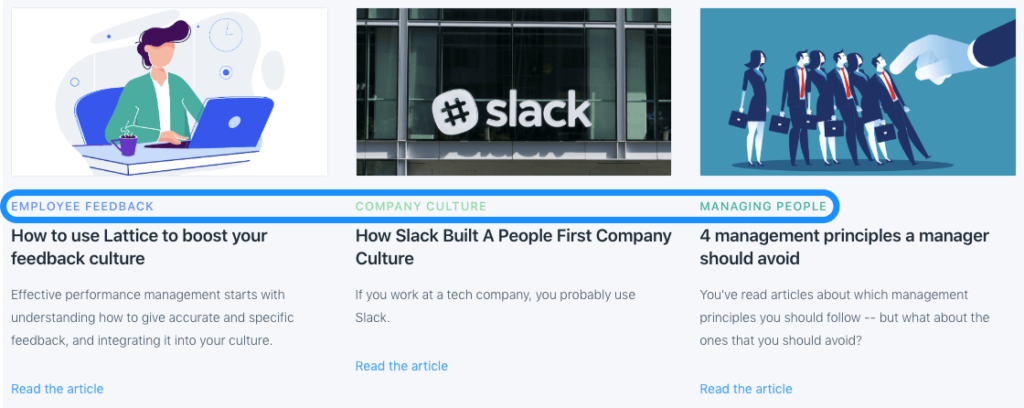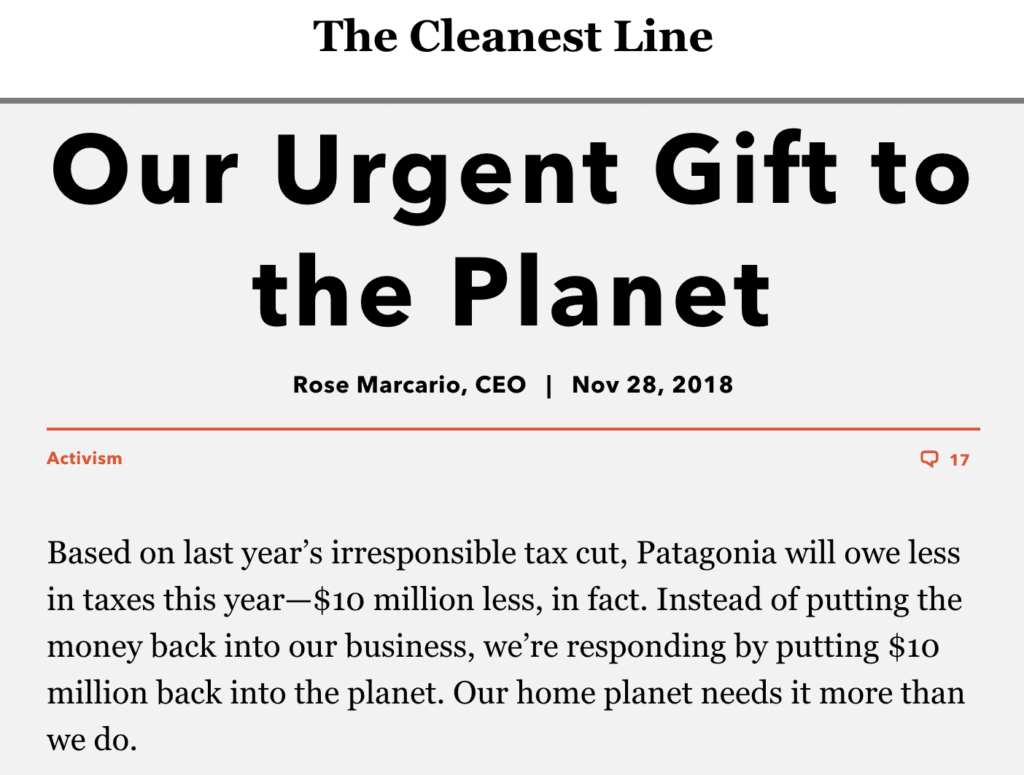
Most organizations want to be known as a thought leader and create content to define themselves distinctly, yet they often add to the noise instead of building authority.
Being considered a thought leader requires more than committing to publishing content as what truly builds recognition is the ideas you’re covering and how they’re positioned.
A thought leader is a firm that’s regarded by its customers, competitors, and the market as an authority in their area of expertise, becoming the go-to resource on a set of topics.
One of the most effective ways of fostering thought leadership with these stakeholders is consistently expressing the right ideas with content and presenting them strategically.
Here are eight tips for translating your thought leadership principles into dynamic content that resonates with the right audience.
Focus on a Set of Topics
Narrow in on a few themes your organization will cover as the goal is to become known for a particular expertise, not as an expert on everything.
Establish three to five categories of topics that best describe the subjects you’ll address with all the content you’re producing.
By defining a focus to the topics being covered with content, you’re prioritizing resources and making it easier for the audience to understand your expertise.

For example, Lattice, an HR performance management software company, focuses their articles on categories like company culture, employee engagement, people operations, and more to highlight their unique perspective on these HR-related themes.
Choose categories that are broad enough to provide the flexibility to cover a range of topics, but specific enough that they relate to one another, align with the customer’s needs, and your offerings as a business.
Commit to Consistency
Building an association between your company and its expertise requires repeatedly providing stakeholders with helpful information on the same set of topics with content.
Repetition creates a connection with customers, particularly when the content being shared is relevant, useful, and high-quality.
It’s essential that you’re reaching your audience on a weekly basis with content that addresses a range of relevant topics.
However, you don’t need to deliver new content to them weekly, but instead, repurpose existing content by resharing it and presenting it in new formats.
Aim to produce multiple videos, articles, infographics, guides, or other formats of content per month, while using existing content to fill in the gaps in between.
With constant competition for your audience’s attention, a long-term commitment to sharing actionable information is necessary to become known as a reliable resource.
Go In-depth with Your Coverage
One way an article, video, or report is considered impactful is if the details of the resource help its audience understand a topic or it empowers them to take action.
Many subjects require a lengthier explanation in order to provide the necessary details that provide clarity to a reader, listener, or viewer.
Including details, like a relevant first-hand experience, can act as evidence to support the points being made within a piece.
Being comprehensive is also a way to differentiate your content from what’s already available as much of the content published today is often too brief.
While some topics are suited for a shorter word count or a quick video, many are highly nuanced and require a thorough explanation.
For example, describing a solution to a complicated challenge facing your industry isn’t likely explained in enough detail in a 500-word article or two-minute video.
While there’s no standard length to aim for with content, producing longer resources offers more opportunities to include points that resonate.
The quality of content isn’t defined by its length, but by how comprehensive the discussion of a topic is as it demonstrates a firm’s expertise and thoroughness.
Add Your Unique Perspective
Companies in the same industry often create content about similar topics, but it’s the angle taken to describe the subject that differentiates one resource from another.
Take a stand on the topics you’re covering by arguing why a certain subject matters, refuting conventional wisdom or how a certain approach leads to a positive outcome.
The viewpoint expressed by your organization with content can’t be duplicated as it represents its distinct outlook on the industry and the subjects you’re discussing.
An organization’s values, leadership, experience, company culture, and goals all influence its frame of reference.
The stance a business expresses through content is what people connect with if they agree with the company’s interpretation or have been convinced by your argument.

Many organizations have made their stance known on important topics through content like Gillette’s video addressing toxic masculinity or Patagonia’s articles on how the environment is negatively impacted by the U.S. government’s policies.
These viewpoints won’t always relate to social issues, but they should continually reflect the company’s opinion and research aligned with its key topic categories in order to become known.
Include Exclusive Information or Data
A key consideration that supports a company’s stance on a topic is including evidence to advance the argument being made.
Quotes and interviews from subject-matter experts, analysis of owned data, and collecting insights from research and surveys are all types of evidence to improve your content.
Gathering this original information and data requires additional time, resources, and expertise to interview sources, conduct original research and surveys, and analyze data.
This added effort can help position content distinctly as thought leadership if the information is valuable to customers and is available exclusively from your company.

For instance, the Cleveland Clinic, an academic medical center, hosts a podcast called Health Essentials that answers questions about common diseases and conditions.
Each episode features an interview with a healthcare professional from the clinic, sharing their expert insights on the medical topics they’re qualified to discuss.
The podcast is one method of building thought leadership in the medical community for the clinic through sharing free, high-quality, and exclusive insights on healthcare topics.
Sharing this type of proprietary information can help an organization become the go-to resource on a certain subject.
Tie into the Timeliness of Trending Topics
Another approach to establishing thought leadership is by covering new, timely topics of interest that are being widely discussed in the news and in the industry-at-large.
Creating content on these topics presents an opportunity for your company to contribute meaningful insights as part of a larger conversation.
By adding useful information and analysis to a discussion, an organization can attract more visibility to its ideas in the media and amongst industry stakeholders.
This LinkedIn article from the CEO of Kaiser Permanente, a health plan provider, is an example of this practice inaction as he shares his analysis of the mental health crisis.
This conversation on mental health and social media usage is not only being broadly discussed in the media today but is relevant for the organization to speak on.
Not every timely news story makes sense to comment on as each needs to be aligned with an organization’s subject-matter expertise, audience, and topic categories.
Sharing advice on the latest industry news and conversations is an opportunity to demonstrate expertise on established topics and signal your leadership in new areas.
Address the Tension Related to a Topic
Content that gets people talking is sometimes controversial as it refutes traditional wisdom, explores both sides of a touchy subject or describes a taboo topic.
The goal isn’t to anger your audience or gain attention at any cost, but to encourage constructive discussions on the aspects of important topics that get overlooked.
Think critically about what aspects of a topic aren’t typically discussed and identify why that is to better understand what areas are worth exploring further.
For example, Abodo, a local apartment search service, conducted a study on the most racist cities in the United States based on Twitter activity in different regions.
By analyzing the sensitive contents of the tweets shared in different cities, the company produced a list of the most prejudice and most politically correct places to live.
The study visualized the collected data but didn’t present any conclusions, allowing its audience to come up with their own opinion based on the findings.
As a result, the controversial study was shared over 3,000 times on social media and covered by Adweek, AOL, Business Insider, Slate, CNET, and nearly 600 other websites.
Exploring the tension of a topic is an opportunity to share new findings, spur discussions, and demonstrate that the organization is willing to discuss tough topics.
To encourage productive conversations, address subjects related to your offerings, topic categories, and based on the audience’s interests while being strategic about how you’re presenting the information.
The Unique Use of a Channel or Format
Known as first-mover advantage, companies can earn attention by being one of the first firms to use a marketing channel or content format in an impactful way.
Whether embracing a newly released feature of a social network or reimagining the use of an existing content format like an infographic, the novelty is what gets people talking.
When Instagram launched IGTV in 2018, lots of creators on the social network started using the feature to share longer-form vertical videos with their audiences.
A few brands quickly developed a series for this new video feature like Tarte Cosmetics, Nike, and Travel + Leisure, which lead to media coverage of their efforts on Instagram.
Being one of the first organizations to embrace a new marketing channel or feature on an existing medium is a chance to set the standard for how others will use it.
Beyond earning media mentions, using a channel in a distinct way is a chance to demonstrate an organization’s willingness to experiment with new opportunities and innovate on the status quo.
The focus of the content being shared still needs to be high-quality and relevant to your audience, which is why the use of a channel or format is only one part of the process.
Establishing thought leadership will continue to be a strategic priority for marketing departments as it helps firms of all sizes distinguish themselves in noisy industries.
Creating content that communicates thought leadership requires making purposeful decisions about what elements to include within a resource to ensure it is remarkable.
By embracing these guidelines for content, marketers can more effectively signal their authority to customers, competitors, and partners.
Have you struggled to produce content that establishes you as a leader? What part of the process is the most challenging? Share with me below.


